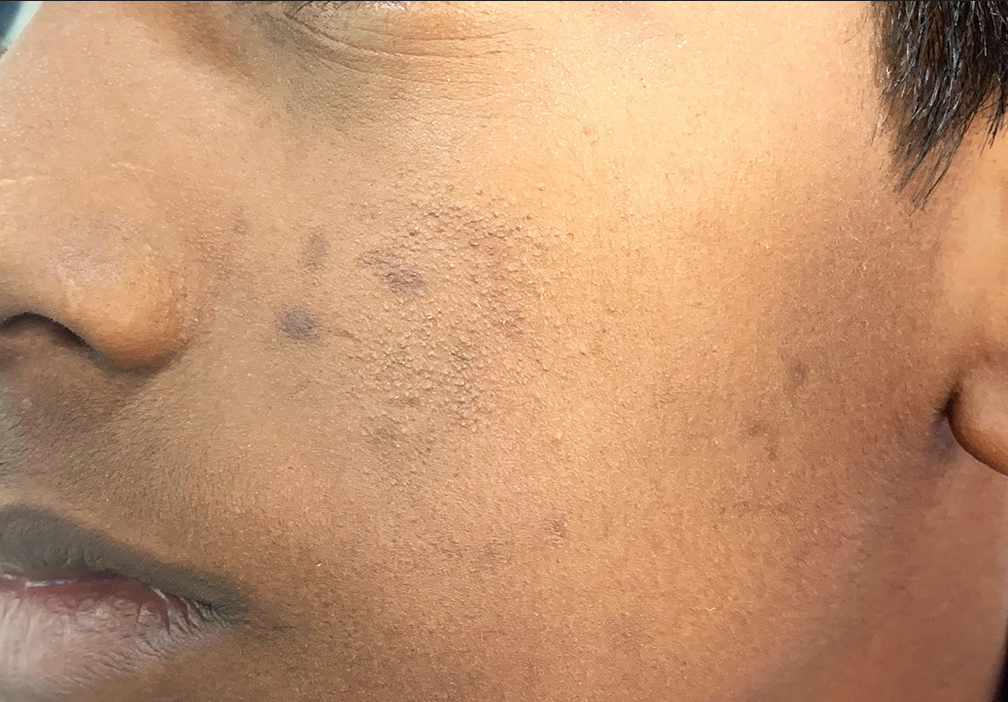Translate this page into:
Traumatic anserine folliculosis in a child

*Corresponding author: Arun Somasundaram, Department of Dermatology, Jawaharlal Institute of Postgraduate Medical Education and Research, Puducherry, India. arunsomasundaram25@gmail.com
-
Received: ,
Accepted: ,
How to cite this article: Somasundaram A. Traumatic anserine folliculosis in a child. CosmoDerma 2023;3:141.
A 9-year-old boy presented with asymptomatic skin lesions over his left cheek for 6 months. He later gave a history of lying in a peculiar position while watching television or sleeping which led to friction and roughness over his left cheek. Cutaneous examination revealed multiple skin-colored discrete but grouped follicular papules over the left side of the cheek with a sandpaper-like feel when touched with no surrounding erythema [Figure 1]. Considering the affection site and history, a diagnosis of traumatic anserine folliculosis was made. The child was initiated on a topical tretinoin cream and was advised to avoid friction.

- Closely set skin-colored discrete but grouped follicular papules over the cheek
Traumatic anserine folliculosis is an underreported entity characterized by multiple grouped follicular papules located over the chin, neck, and jaw. Other differentials that pose a diagnostic challenge include keratosis pilaris, comedonal acne, lichen spinulosus, trichostasis spinulosa, and trichodyplasia spinulosa. The condition is more common in children as their skin is delicate and prone to friction and trauma.[1] It has a good prognosis once the triggering factor is avoided. Treatment includes the application of topical keratolytics. Folliculocentric skin lesions often are considered a diagnostic conundrum in children. This case highlights the importance of a careful history of lying in a peculiar position which was responsible for the friction. Recognition of this trigger is vital as this condition has a good prognosis and often leads to complete resolution if they are identified and stopped.
Declaration of patient consent
Patient’s consent was not required as patients identity was not disclosed or compromised.
Conflicts of interest
There are no conflicts of interest.
Use of artificial intelligence (AI)-assisted technology for manuscript preparation
The author confirms that there was no use of artificial intelligence (AI)-assisted technology for assisting in the writing or editing of the manuscript and no images were manipulated using AI.
Financial support and sponsorship
Nil.
References
- Traumatic anserine folliculosis. Indian Dermatol Online J. 2017;8:59-61.
- [CrossRef] [PubMed] [Google Scholar]





